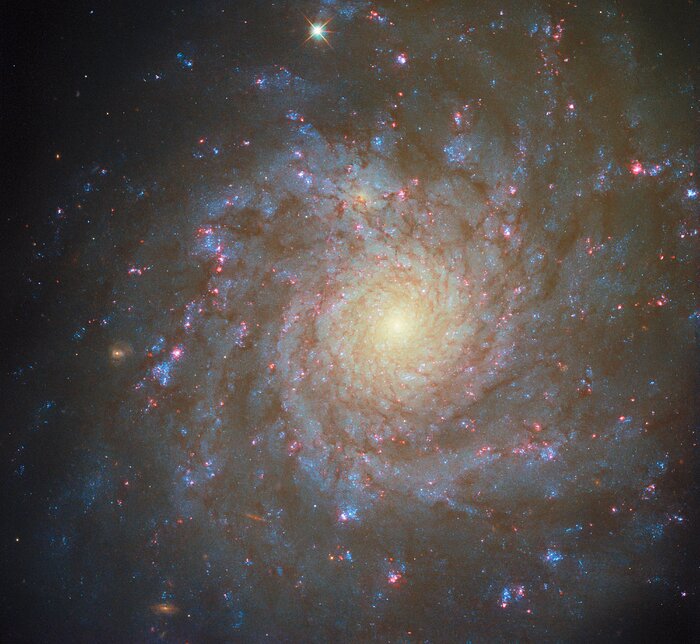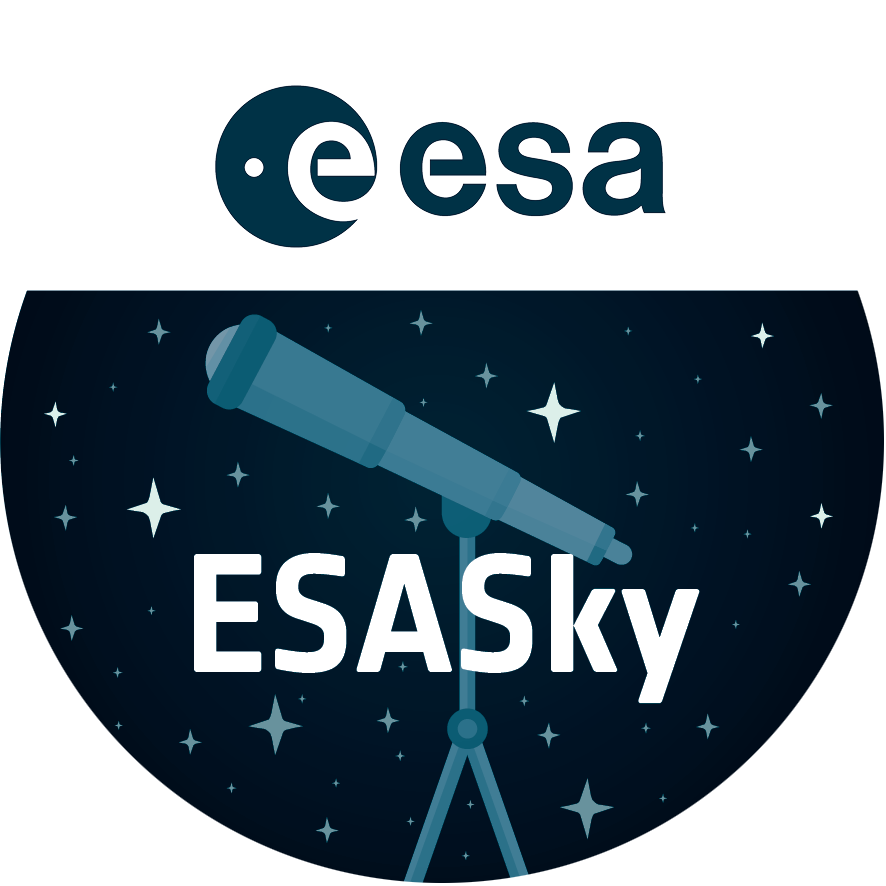Spiralling star factory
A star-studded spiral galaxy shines in this NASA/ESA Hubble Space Telescope Picture of the Week. This galaxy is called NGC 4571, and it’s situated about 60 million light-years away in the constellation Coma Berenices. NGC 4571 dominates the scene with its feathery spiral structure and sparkling star clusters.
The galaxy’s dusty spiral arms are dotted with brilliant pink nebulae that contain massive young stars. Though the star-forming clouds that are seen here are heated to roughly 10 000 degrees by searing ultraviolet light from the young stars at their cores, stars get their start in much chillier environments. The sites of star birth are giant molecular clouds tens to hundreds of light-years across, in which the temperature hovers just a few tens of degrees above absolute zero.
The dramatic transformation from freezing gas cloud to fiery young star happens thanks to the immense pull of gravity, which collects gas into dense clumps within a star-forming cloud. As these clumps yield to gravity’s pull and collapse inward, they eventually become hot and dense enough to spark nuclear fusion in their centres and begin to shine. The glowing clouds in this image surround particularly massive stars that are hot enough to ionise the gas of their birthplaces.
A Hubble image of NGC 4571 was previously released in 2022, using data from an observing programme the combines data from leading observatories like Hubble, the NASA/ESA/CSA James Webb Space Telescope, and the Atacama Large Millimeter/submillimeter Array to study star formation in nearby spiral galaxies like NGC 4571. The new image released today adds data from a programme that seeks to understand how dust affects our observations of young stars deeply embedded within their natal clouds.
[Image Description: A spiral galaxy, seen face-on, fills the view. Swirling, patchy and broken spiral arms surround a softly glowing centre. The arms are filled with blue, speckled patches showing star clusters, shining pink and red dots where young stars are lighting up gas clouds, and a web of thin, dark red dust lanes. The glow of the galaxy’s arms extends out into the dark background. Individual tiny stars appear throughout.]
Links
Credit:ESA/Hubble & NASA, F. Belfiore, J. Lee and the PHANGS-HST Team
About the Image
| Id: | potw2543a |
|---|---|
| Type: | Observation |
| Release date: | 27 October 2025, 06:00 |
| Size: | 4102 x 3775 px |
About the Object
| Name: | NGC 4571 |
|---|---|
| Distance: | 60 million light years |
| Constellation: | Coma Berenices |
| Category: | Galaxies |
Image Formats
Classic Wallpapers
Coordinates
| Position (RA): | 12 36 56.13 |
|---|---|
| Position (Dec): | 14° 13' 12.71" |
| Field of view: | 2.71 x 2.49 arcminutes |
| Orientation: | North is 105.1° left of vertical |
Colours & filters
| Band | Wavelength | Telescope |
|---|---|---|
| Ultraviolet UV | 275 nm |
Hubble Space Telescope
WFC3 |
| Optical U | 336 nm |
Hubble Space Telescope
WFC3 |
| Optical B | 438 nm |
Hubble Space Telescope
WFC3 |
| Optical V | 555 nm |
Hubble Space Telescope
WFC3 |
| Optical I | 814 nm |
Hubble Space Telescope
WFC3 |
| Optical H-alpha + NII | 657 nm |
Hubble Space Telescope
WFC3 |


